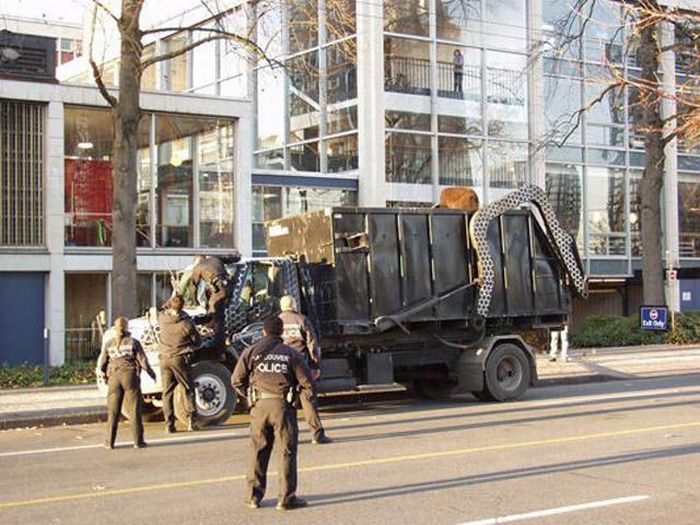|
|
Bear Cub Caught In Garbage Truck In Downtown Vancouver, Canada
|
Members of living lineages of bears diverged from Ursavus ~20 Ma ago, likely via the species Ursavus elmensis. Based on genetic and morphological data, the subfamily Ailuropodinae (pandas) was the first to diverge from other living bears ~19 Ma ago, although no fossils of this group have been found pre-dating about 5 Ma.
The New World short-faced bears (Tremarctinae) differentiated from Ursinae following a dispersal event into North America during the mid Miocene (~13 Ma). They invaded South America (~1 Ma) following formation of the Isthmus of Panama. Their earliest fossil representative is Plionarctos in North America (~10-2 Ma). This genus is probably the direct ancestor to the North American short-faced bears (genus Arctodus), the South American short-faced bears (Pararctotherium and Arctotherium), and the spectacled bears, Tremarctos, represented by both an extinct North American species (T. floridanus), and the lone surviving representative of the Tremarctinae, the South American spectacled bear (T. ornatus).
The subfamily Ursinae experienced a dramatic proliferation of taxa ~5.3-4.5 Ma ago coincident with major environmental changes, with the first members of the genus Ursus also appearing around this time. The sloth bear is a modern survivor of one of the earliest lineages to diverge during this radiation event (~5.3 Ma); it took on its peculiar morphology related to its diet on termites and ants no later than by the early Pleistocene. By 3-4 Ma ago, the species Ursus minimus appears in the fossil record of Europe, which apart from size is nearly identical to today's Asiatic black bear. It is likely ancestral to all bears within Ursinae, perhaps aside from the sloth bear. Two lineages evolved from U. minimus, the black bears (including the sun bear, the Asiatic black bear, and the American black bear), and the brown bears. Modern brown bears evolved from U. minimus via Ursus etruscus, which itself is ancestral to both the extinct Pleistocene cave bear and the ancestor of today's brown and polar bears. Species of Ursinae have migrated repeatedly into N. America from Eurasia as early as 4 Ma ago during the early Pliocene.
The fossil record of bears is exceptionally good. Direct ancestor-descendent relationships between individual species are often fairly well-established, with sufficient intermediate forms known to make the precise cut-off between an ancestral and its daughter species subjective.
|
|









